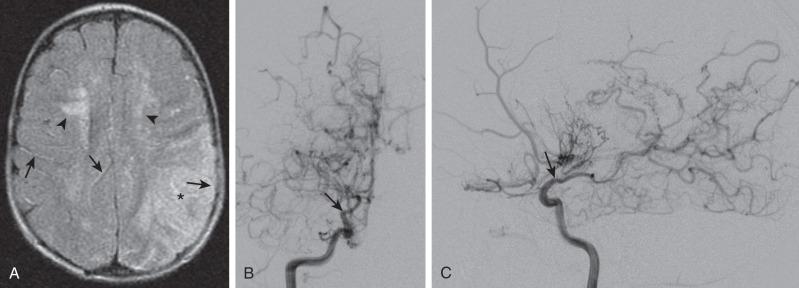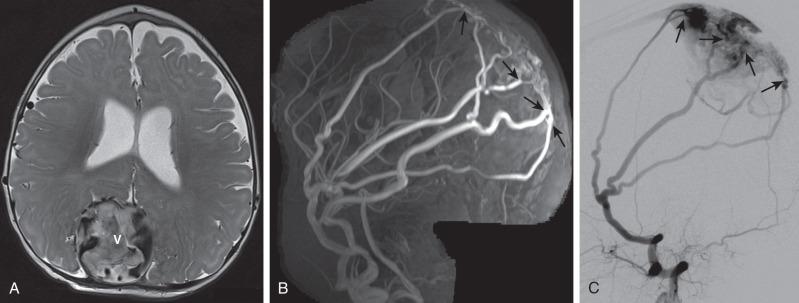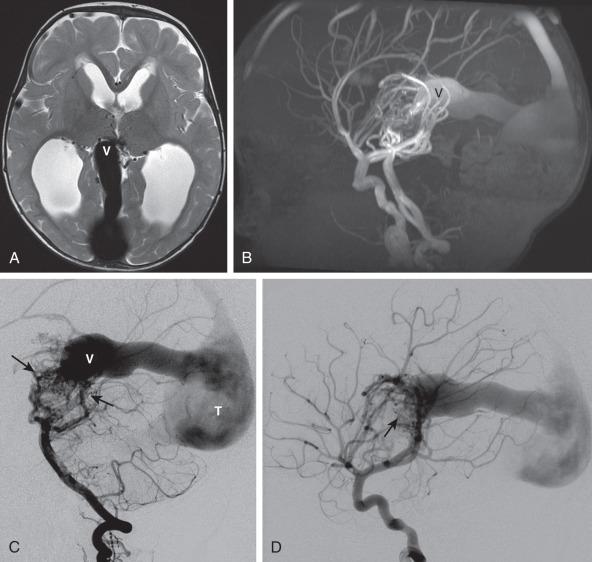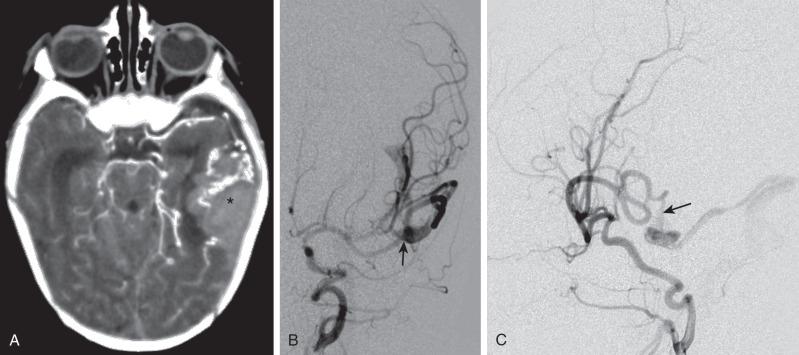Physical Address
304 North Cardinal St.
Dorchester Center, MA 02124
Stroke is defined as a neurologic deficit persisting for more than 24 hours and may be caused by cerebral ischemia or intracranial hemorrhage. The annual incidence of stroke in children ranges from 2 to 13 cases per 100,000 patients and is among the top 10 causes of death in childhood. Among children diagnosed with stroke, more than 40% will have major neurologic sequelae and more than 75% will have perceptible residual neurologic deficits.
The clinical presentation of stroke in children is sometimes heralded by the abrupt onset of focal neurologic deficits; however, the symptoms are often nonspecific, resulting in delayed diagnosis.
The most common predisposing conditions in children include cerebrovascular arteriopathy, vascular anomalies, aneurysms, congenital heart disease, sickle cell disease, and hematologic abnormalities. Over half of all strokes in children are ischemic caused by intrinsic vasculopathy or embolic phenomenon, and vascular malformations, aneurysms, and venous sinus thrombosis are the most common causes of hemorrhagic stroke. This chapter focuses on pediatric vascular abnormalities as causes of ischemic and hemorrhagic stroke.
Ischemic stroke in children has an annual incidence of between 2 and 3 per 100,000 children in the United States. Identifiable causes of ischemic stroke occur in approximately 70% of cases, including arterial dissection, moyamoya disease, sickle cell disease, vasculitis/angiitis of the central nervous system, and coagulopathy. The remaining cases are often idiopathic in origin. Twenty-five percent of children with ischemic stroke have coexistent cardiac disease, suggesting a component of embolic etiology.
The most common symptoms of ischemic stroke in children are hemiplegia, seizures, fever, dysphagia, headache, and altered level of consciousness. Headache and seizures are especially common in chronic ischemic conditions such as moyamoya disease.
The imaging features of ischemic stroke in children are variable and depend on the underlying cause. In acute arterial dissection, large vessel arterial distribution infarction is often present on computed tomography (CT) or magnetic resonance imaging (MRI). By contrast, in proximal, chronic steno-occlusive disease such as moyamoya disease ( Fig. 36.1 ), infarctions may be absent, conform to an arterial territory, or lie within the watershed zones between the major vascular territories.

Noninvasive vascular imaging such as computed tomographic angiography (CTA) or magnetic resonance angiography (MRA) may show dissection as an abrupt vascular cutoff intracranially or as tapering stenosis, commonly seen with involvement of the neck vasculature. In moyamoya disease, stenosis or occlusion of the supraclinoid segment of the internal carotid artery and/or proximal middle and anterior cerebral arteries is usually present, with collateral vessel formation in the basal ganglia and along the pial surfaces. Vasculitis causes irregular narrowing of medium or small vessels and is inconsistently demonstrated on CTA or MRA. Catheter angiography remains the gold standard for the imaging diagnosis of cerebrovascular disease in children and should be considered whenever a small vessel vasculitis is suspected or when surgical treatment is contemplated.
Vascular anomalies are disorders of vascular development. Although congenital, they may only become symptomatic many months or years after birth. Intracranial vascular malformations are classified according to the vascular channels involved and the hemodynamics of the lesion (high-flow vs. low-flow).
High-flow vascular anomalies occur when there is an abnormal connection between an artery and a vein that bypasses the normal arteriolar-capillary network. In arteriovenous fistula (AVF), the supplying artery communicates directly with the draining vein through a macroscopic fistula. In arteriovenous malformation (AVM), the supplying artery connects with the draining vein through a plexiform network of abnormal vessels, termed the nidus . Both AVF and AVM can be further subdivided, on the basis of anatomic location, as dural, subarachnoid (vein of Galen malformation), pial, or parenchymal ( Figs. 36.2, 36.3, and 36.5 ; e-Fig. 36.4 ).



High-flow vascular malformations may produce clinical manifestations by different methods. The presence of a direct channel between a supplying artery and a draining vein allows for potentially rapid blood flow. In the absence of venous outflow obstruction, the malformation may cause high-output cardiac failure. Additionally, the lower resistance through the malformation may result in diversion of blood away from the normal brain parenchyma (“steal” phenomenon), producing cerebral ischemia. High-flow malformations also expose the draining veins to arterial pressure, which may cause progressive stenosis of the vein (termed high-flow venopathy ) or the development of a varix or venous aneurysm that predisposes to hemorrhage. High-flow venopathy may be a cause of seizures or cerebral atrophy due to impaired tissue perfusion from venous hypertension. Hydrocephalus can develop from increased venous pressures that result in impaired resorption of cerebrospinal fluid (see Fig. 36.3A ).
Dural AV fistulas in the pediatric population are most frequently congenital, as opposed to acquired AV fistulas in the adult population. The malformation is formed by an abnormal connection between the meningeal arterial supply from the external carotid vasculature with a dural venous sinus (see Fig. 36.2 ). The abnormal connections are frequently located in the vicinity of the torcular herophili, and may be associated with high-output heart failure.
Vein of Galen malformation (VOGM) is a fistulous connection with arterial supply from the deep choroidal arteries and venous drainage through a persistent dilated embryonic median prosencephalic vein, one of the embryologic precursors of the vein of Galen (see Fig. 36.3 ). The symptoms, signs, and age at presentation associated with VOGMs depend on the angioarchitecture of the anomaly and the degree of venous outflow obstruction. In the absence of venous outflow obstruction, VOGMs may produce congestive heart failure in the fetus or neonate due to the shunting of blood through the malformation. Additionally, intracranial hemorrhage can occur from rupture of the varix. VOGMs with fewer arteriovenous connections often present later in infancy or childhood with hydrocephalus or brain atrophy caused by progressive venous hypertension and impaired parenchymal perfusion (see Fig. 36.3 ).
Become a Clinical Tree membership for Full access and enjoy Unlimited articles
If you are a member. Log in here